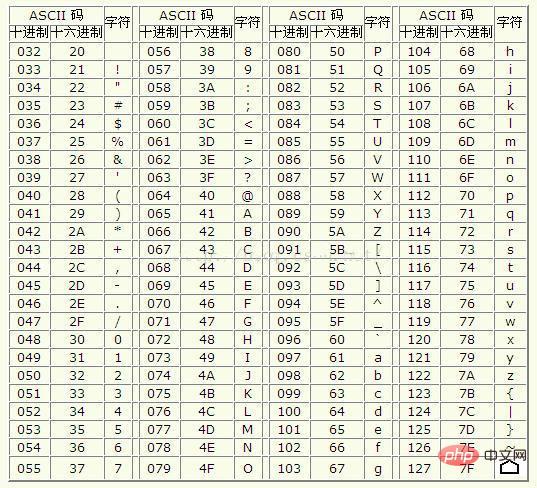 Backend Development
Backend Development
 C#.Net Tutorial
C#.Net Tutorial
 How many ideas are there for converting uppercase and lowercase letters in C++?
How many ideas are there for converting uppercase and lowercase letters in C++?
How many ideas are there for converting uppercase and lowercase letters in C++?

C Introduction:
C is the inheritance of C language. It can not only perform procedural programming of C language, but also perform other tasks. Object-based programming characterized by abstract data types can also be used for object-oriented programming characterized by inheritance and polymorphism. While C is good at object-oriented programming, it can also perform process-based programming. Therefore, C is big or small in terms of the size of the problem it can adapt to.
C not only has the practical features of efficient computer operation, but is also committed to improving the programming quality of large-scale programs and the problem description capabilities of programming languages.
C There are several ideas for converting uppercase and lowercase letters:
Idea 1. Convert according to the ASCII table of letters:

As can be seen from the table, the difference between the corresponding uppercase and lowercase letters is 32, from which the following programming ideas can be derived:
Program 1.1
#include <iostream>
using namespace std;
int main()
{
char a[20];
int i = 0;
cout<<"请输入一串字符:\n";
cin>>a;
for(;a[i];i++)
{
if(a[i] >= 'a'&&a[i] <= 'z')
a[i] -= 32;
else if(a[i] >= 'A'&&a[i] <= 'Z')
a[i] += 32;
}
for(i = 0;a[i];i++)
cout<<a[i];
cout<<endl;
system("pause");
return 0;
}Program 1. 2
#include <iostream>
using namespace std;
void main(void)
{
char i;
cout<<"Input,'#'for an end: "<<endl;
while(1)
{
cin >> i;
if ((i>=65)&&(i<=90))
{
i=i+32;
cout << i;
}
else if((i>=97)&&(i<=122))
{
i=i-32;
cout << i;
}
else
cout << (int)i;
if(i=='#')
break;
}
}Idea 2: Using the uppercase and lowercase letter conversion function, the following programming ideas can be derived from this:
Program 2.1 Simple version
#include <iostream>
using namespace std;
int main()
{
cout<<(char)toupper(97)<<'\n';
cout<<(char)toupper('a')<<'\n';
cout<<(char)tolower(66)<<'\n';
cout<<(char)tolower('B')<<'\n';
return 0;
}Program 2.2 Utilize functions strupr, strlwr
#include<iostream>
#include<string>
using namespace std;
int main()
{
//声明字符数组
char str[80],*p;
int i;
//转换字符串中的小写为大写
cout<<"将字符串中的小写字母转换为大写"<<endl;
cout<<"请输入原字符串:"<<endl;
cin>>str;
p=strupr(str);
cout<<"p:"<<p<<endl;
cout<<"string:"<<str<<endl;
cout<<"___________________"<<endl;
//转换字符串中的大写为小写
cout<<"将字符串中的大写字母转换为小写"<<endl;
cout<<"请输入原字符串:"<<endl;
cin>>str;
p=strlwr(str);
cout<<"p:"<<p<<endl;
cout<<"string:"<<str<<endl;
cout<<"___________________"<<endl;
system("pause");
return 0;
}Program 2.3 Utilize functions toupper, tolower
#include<iostream>
#include<cctype>
#include<vector>
using namespace std;
int main()
{
vector<char> vch;
int n;
char elem;
cout<<"请输入大小写字符的个数:";
cin>>n;
cout<<"请输入"<<n<<"个大小写字符:";
for(int i = 0;i<n;++i)
{
cin>>elem;
vch.push_back(elem);
}
vector<char>::iterator it = vch.begin();
for(it;it != vch.end();++it)
{
if(*it >= 'a'&&(*it) <='z')
*it = toupper(*it);
else if(*it >= 'A'&& (*it) <= 'Z')
*it = tolower(*it);
}
cout<<"大小写转化之后的结果:";
vector<char>::iterator itera = vch.begin();
for(itera;itera != vch.end();++itera)
cout<<*itera;
cout<<endl;
return 0;
}Program 2.4 Use transform with tolower and toupper to combine
#include<iostream>
#include<algorithm>
#include<string>
#include<cctype>
using namespace std;
int main()
{
cout<<"请输入一个全部大写的字符串:";
string str;
cin>>str;
///转小写
transform(str.begin(),str.end(),str.begin(),tolower);
///transform(wstr.begin(), wstr.end(), wstr.begin(), towlower);
cout<<"转化为小写后为:"<<str<<endl;
///转大写
cout<<"请再输入一个全部小写的字符串:";
string s;
cin>>s;
transform(s.begin(), s.end(), s.begin(), toupper);
///transform(wstr.begin(), wstr.end(), wstr.begin(), towupper);
cout<<"转化为大写后为:"<<s;
wstring wstr =L"Abc";
transform(wstr.begin(), wstr.end(), wstr.begin(), towupper);
cout<<wstr;
return 0;
}Program 2.5 is written as a convert function, using |= and &= to transform
#include <iostream>
#include <cassert>
using namespace std;
char* convert(char *src)
{
char *p = src;
assert(p != NULL);
while(*p)
{
if ('A' <= *p && *p < 'Z')
*p |= 0x20;
else if ('a' <= *p && *p < 'z')
*p &= ~0x20;
p++;
}
return src;
}
int main()
{
char src;
cin>>src;
convert(&src);
cout<<src;
return 0;
}Recommended tutorial: "C Language Tutorial"
The above is the detailed content of How many ideas are there for converting uppercase and lowercase letters in C++?. For more information, please follow other related articles on the PHP Chinese website!

Hot AI Tools

Undresser.AI Undress
AI-powered app for creating realistic nude photos

AI Clothes Remover
Online AI tool for removing clothes from photos.

Undress AI Tool
Undress images for free

Clothoff.io
AI clothes remover

AI Hentai Generator
Generate AI Hentai for free.

Hot Article

Hot Tools

Notepad++7.3.1
Easy-to-use and free code editor

SublimeText3 Chinese version
Chinese version, very easy to use

Zend Studio 13.0.1
Powerful PHP integrated development environment

Dreamweaver CS6
Visual web development tools

SublimeText3 Mac version
God-level code editing software (SublimeText3)

Hot Topics
 1377
1377
 52
52
 How to implement the Strategy Design Pattern in C++?
Jun 06, 2024 pm 04:16 PM
How to implement the Strategy Design Pattern in C++?
Jun 06, 2024 pm 04:16 PM
The steps to implement the strategy pattern in C++ are as follows: define the strategy interface and declare the methods that need to be executed. Create specific strategy classes, implement the interface respectively and provide different algorithms. Use a context class to hold a reference to a concrete strategy class and perform operations through it.
 How to implement nested exception handling in C++?
Jun 05, 2024 pm 09:15 PM
How to implement nested exception handling in C++?
Jun 05, 2024 pm 09:15 PM
Nested exception handling is implemented in C++ through nested try-catch blocks, allowing new exceptions to be raised within the exception handler. The nested try-catch steps are as follows: 1. The outer try-catch block handles all exceptions, including those thrown by the inner exception handler. 2. The inner try-catch block handles specific types of exceptions, and if an out-of-scope exception occurs, control is given to the external exception handler.
 How to use C++ template inheritance?
Jun 06, 2024 am 10:33 AM
How to use C++ template inheritance?
Jun 06, 2024 am 10:33 AM
C++ template inheritance allows template-derived classes to reuse the code and functionality of the base class template, which is suitable for creating classes with the same core logic but different specific behaviors. The template inheritance syntax is: templateclassDerived:publicBase{}. Example: templateclassBase{};templateclassDerived:publicBase{};. Practical case: Created the derived class Derived, inherited the counting function of the base class Base, and added the printCount method to print the current count.
 What is the role of char in C strings
Apr 03, 2025 pm 03:15 PM
What is the role of char in C strings
Apr 03, 2025 pm 03:15 PM
In C, the char type is used in strings: 1. Store a single character; 2. Use an array to represent a string and end with a null terminator; 3. Operate through a string operation function; 4. Read or output a string from the keyboard.
 Why does an error occur when installing an extension using PECL in a Docker environment? How to solve it?
Apr 01, 2025 pm 03:06 PM
Why does an error occur when installing an extension using PECL in a Docker environment? How to solve it?
Apr 01, 2025 pm 03:06 PM
Causes and solutions for errors when using PECL to install extensions in Docker environment When using Docker environment, we often encounter some headaches...
 How to handle cross-thread C++ exceptions?
Jun 06, 2024 am 10:44 AM
How to handle cross-thread C++ exceptions?
Jun 06, 2024 am 10:44 AM
In multi-threaded C++, exception handling is implemented through the std::promise and std::future mechanisms: use the promise object to record the exception in the thread that throws the exception. Use a future object to check for exceptions in the thread that receives the exception. Practical cases show how to use promises and futures to catch and handle exceptions in different threads.
 Four ways to implement multithreading in C language
Apr 03, 2025 pm 03:00 PM
Four ways to implement multithreading in C language
Apr 03, 2025 pm 03:00 PM
Multithreading in the language can greatly improve program efficiency. There are four main ways to implement multithreading in C language: Create independent processes: Create multiple independently running processes, each process has its own memory space. Pseudo-multithreading: Create multiple execution streams in a process that share the same memory space and execute alternately. Multi-threaded library: Use multi-threaded libraries such as pthreads to create and manage threads, providing rich thread operation functions. Coroutine: A lightweight multi-threaded implementation that divides tasks into small subtasks and executes them in turn.
 How to calculate c-subscript 3 subscript 5 c-subscript 3 subscript 5 algorithm tutorial
Apr 03, 2025 pm 10:33 PM
How to calculate c-subscript 3 subscript 5 c-subscript 3 subscript 5 algorithm tutorial
Apr 03, 2025 pm 10:33 PM
The calculation of C35 is essentially combinatorial mathematics, representing the number of combinations selected from 3 of 5 elements. The calculation formula is C53 = 5! / (3! * 2!), which can be directly calculated by loops to improve efficiency and avoid overflow. In addition, understanding the nature of combinations and mastering efficient calculation methods is crucial to solving many problems in the fields of probability statistics, cryptography, algorithm design, etc.



